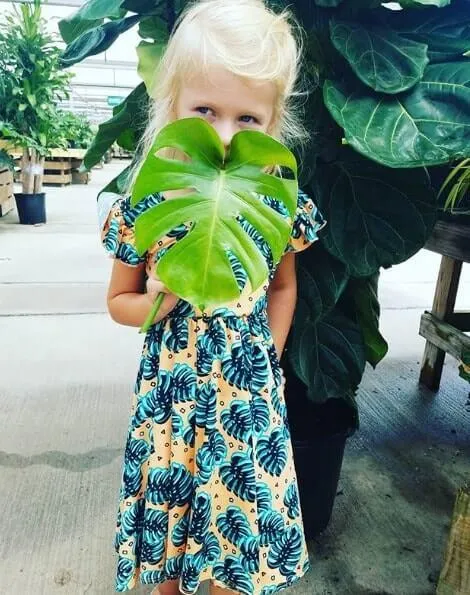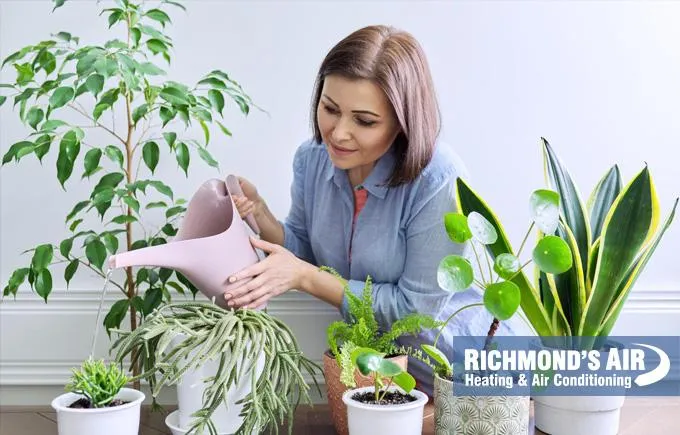Everything You Need to Know About Keeping Real Houseplants
Wondering if those leafy green beauties you see decorating homes are the real deal? You’ve come to the right place, friend. As an avid plant parent myself, I’ve learned a thing or two about caring for living plants indoors over the years. From my experience, keeping real houseplants is totally doable – you just gotta know what you’re getting into. So pull up a chair, grab a cold one, and let me tell you everything I’ve picked up about living with the plant gang.
Choosing the Right Plants for Your Home
The first step is picking out houseplants that will actually thrive in your space. Not all plants are created equal, so you wanna choose kinds that match your home’s light levels, temperatures, and watering schedule. Based on where most peeps live, I’d recommend starting with some ubiquitous yet hardy gals like pothos, snake plant, or peace lily. They’re basically indestructible – you can forget to water ’em for weeks and they’ll still be vibin’.
You’ll also want to consider whether any plant buddies you choose are non-toxic, in case curious kids or pets get a little sniffy. The ASPCA has a great list of safe and unsafe picks. Kind of a buzzkill, I know, but better to air on the side of caution with the little ones underfoot. Did you know peace lilies are toxic? I was stunned when I found out!

Caring for Your Plants
Once you’ve selected your plant peeps, it’s time to set ’em up for success. Here are some basics on keeping real houseplants happy and healthy:
- Watering: Over or under-watering are common causes of plant demise. Check soil moisture regularly with your finger – when it’s dry about 1-2 inches deep, it’s time to water thoroughly until it drains from the bottom. Let soil dry out between waterings.
- Light: Plants need adequate light to photosynthesize. Place in bright, indirect sunlight away from direct rays that can scorch leaves. Rotate regularly so all sides get equal sun. Consider grow lights if your home is too dark.
- Fertilizing: During the active growing season, use a diluted liquid houseplant fertilizer every few weeks. Read labels for application instructions. Too much can burn roots.
- Repotting: Replant in a larger pot with fresh potting mix when roots start to emerge from the drainage holes. This lets roots spread out and supports continued healthy growth.
- Cleaning: Wipe dust off leaves regularly with a damp cloth to keep your plants photosynthesizing at full capacity. Prune away any yellow or browning foliage.
Stick to these basics and your real plants should thrive for years to come, no green thumb required! Though to be honest, keeping plants has kind of turned into a green thumb flex for me over time. Maybe I’m getting a bit plant smug these days, what do you think?
Common Houseplant Problems
No plant parent is immune to the occasional mishap, so here are some common issues you may see – and how to remedy ’em:

- Underwatering: Brown, crispy plant edges or leaves signaling thirst. Water thoroughly until it drains out the bottom.
- Overwatering: Soggy, yellowing foliage caused by too-wet soil. Let soil dry completely between waterings and improve drainage if needed.
- Pests: Small bugs or webs often indicate infestations. Isolate and spray with neem oil or insecticide. Better safe than sorry!
- Lack of light: Stretching, pale growth means not enough sun. Move to a brighter spot and rotate regularly for even light exposure.
- Chemical burns: Browning leaf tips are usually caused by hard water. Use filtered or distilled water instead of tap. Oopsie!
We’re all learning as we go, so don’t beat yourself up over the occasional plant pratfall. They’re resilient little buggers – just tweak your care based on what you’re seeing and they’ll probably bounce right back. And don’t be afraid to ask plant pals for help if issues persist!
Common Misconceptions
There are a few myths around caring for real houseplants that I’ve discovered aren’t quite true through trial and error:
- Misting doesn’t boost humidity. It leads to more pests and diseases with soggy foliage. A pebble tray or humidifier works better to hydrate plants and skin.
- Plants don’t need fertilizer in winter. When light levels are low, fertilizer provides needed nutrients. Just use at half the summer strength.
- “Brown thumb” means you can’t keep plants alive. We all kill the odd plant – it’s a learning experience! With the right care, anyone can succeed as a plant parent.
So in summary, don’t stress too much about perceived plant “rules.” Listen to your plants, tweak as needed, and have fun nurturing your leafy friends! They’ll reward your attention with plenty of green goodness to enjoy. Hopefully this crash course helped shed some light – pun intended – on caring for real houseplants. Let me know if any other plant questions pop up!

Bringing the Outdoors In
While houseplants are their own kind of beautiful, you may find yourself longing for a taste of nature indoors on dreary days. Luckily there are a few low-effort ways to tap into your green thumb and brighten up inside spaces.
First, try your hand at propagating cuttings from hardier outdoor plants you enjoyed over summer. Pothos, spider plants, philodendrons propagate effortlessly in water on your windowsill. Before long, rooted cuttings will be ready to pot up as new houseplants! Pretty neat, huh?
You could also start seeds indoors like tomatoes, peppers or flowers for an early garden start next year. I find it oddly soothing to tend tiny seedlings under lamps. Just don’t pull a me and forget them in the basement over winter…whoops!

Finally, for major plant vibes without much work, grab some fallen pinecones, branches or rock collections to display in vases or bowls. Change them seasonally for continuous nature reminders indoors. Bonus points if they trigger fun outdoor memories on gray days.
I hope these ideas inspire you to get your hands dirty nurturing plants, even in small ways, all winter long. It’s amazing the joy a bit of green can bring, both for your sprouts and yourself. Now pass me another beer so we can toast to many planty victories ahead! Your new plant pals are counting on you.
Tips for Choosing Houseplants
| Plant | Light Needs | Water Needs | Best Location |
|---|---|---|---|
| Pothos | Low to medium | Allow soil to dry out between waterings | Any room that gets indirect light |
| Snake plant | Low | Water once every 2-4 weeks | Any room with low to medium light |
| ZZ plant | Low to bright indirect | Water when top inch of soil is dry | Any room except direct sun |
| Peace lily | Medium to bright indirect | Water when soil is dry | Bathroom or kitchen |
| Chinese evergreen | Medium to bright indirect | Water when top inch of soil is dry | Any room except direct sun |
FAQ: House plant real
- What is the best type of house plant for beginners?
English ivy, pothos or snake plants are basically your best bets if you’re just starting out with houseplants. They’re quite hardy and don’t need a whole lot of care. - How often do I need to water houseplants?
Most houseplants need water when the top inch or two of soil starts to dry out. Checking the soil with your finger is a kind of simple way to tell, or you can use a moisture meter if you get one. Around once every 7 to 10 days is typical for many types of plants. - What direction should I place houseplants?
In general, east or west facing windows provide the best light for houseplants. North windows don’t tend to get enough direct sunshine. South windows get too much sun for some plants – you may need to pull them back from the window on sunny days. I’ve also found that plants near bright overhead lights can glow up pretty nicely too! - How do I know if a plant needs fertilizer?
Give plants a look over for signs they may need a little nutritional boost. Yellowing lower leaves or stunted growth can be signs a plant is hungry. Most houseplants will benefit from a modest application of fertilizer in the spring and summer when they’re actively growing. Just be sure not to overdo it or you could shock the plant. - What do I do if a leaf is turning yellow?
Sometimes a single yellow leaf isn’t a cause for panic. However, numerous yellowing leaves may be a sign the plant is sick or not getting enough nutrients. Check the soil moisture as usual and then attempt a gentle fertilizing. If many leaves stay yellow despite your care, it may be time to repot it into fresh potting mix to perk things up. - How do I know if a houseplant needs repotting?
Here are some signs it’s time for a size up: if the plant is significantly root bound and roots are growing out the drainage holes or filling the pot. Also if growth suddenly stalls or the plant appears crouched in its pot. Gently remove it and check if roots are coiling tightly instead of spreading out. Most plants enjoy a lift into fresh dirt every 1-2 years. - One of my plants has bugs! What do I do?
Eek, plant pests are definitely not fun to deal with. First, isolate the infested plant from others as a precaution. Carefully inspect leaves and stems with a magnifying glass and try to identify the culprit whether it’s spider mites, mealybugs or something else. Then research appropriate treatment like insecticidal soap or neem oil. If it’s really bad you may need to discard the plant. Good luck getting rid of those creepy-crawlies!
On the other hand, having houseplants is quite rewarding even though sometimes keeping them healthy can pose challenges. From filtering indoor air to boosting mood, plants have amazing benefits. Friends of mine say their greens basically become part of the family! I wonder if anyone has ever named their plants? That would be kind of funny. While keeping plants may take some effort, bringing nature inside your home seems like a small price to pay for all that they offer in return. With good care, many plants can be enjoyed for years which is pretty amazing if you think about it. What are your experiences with houseplants – any tips you can share?
